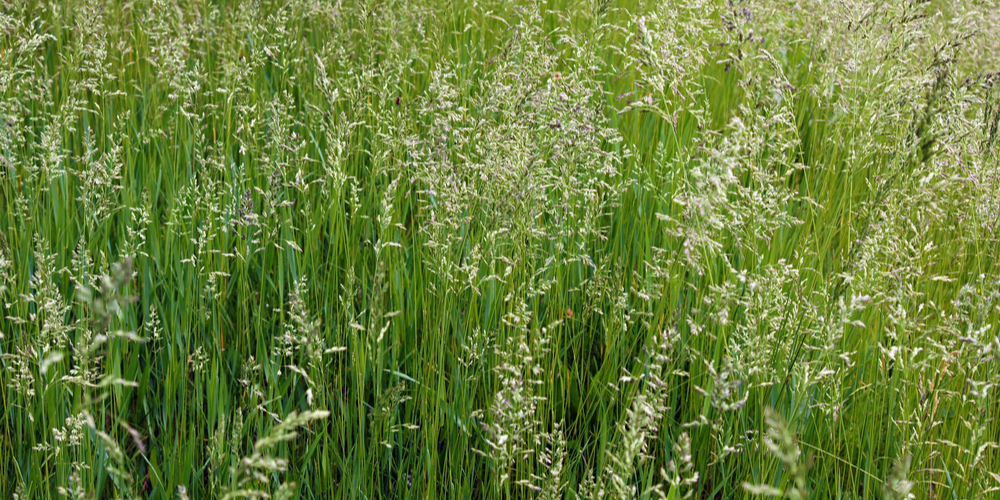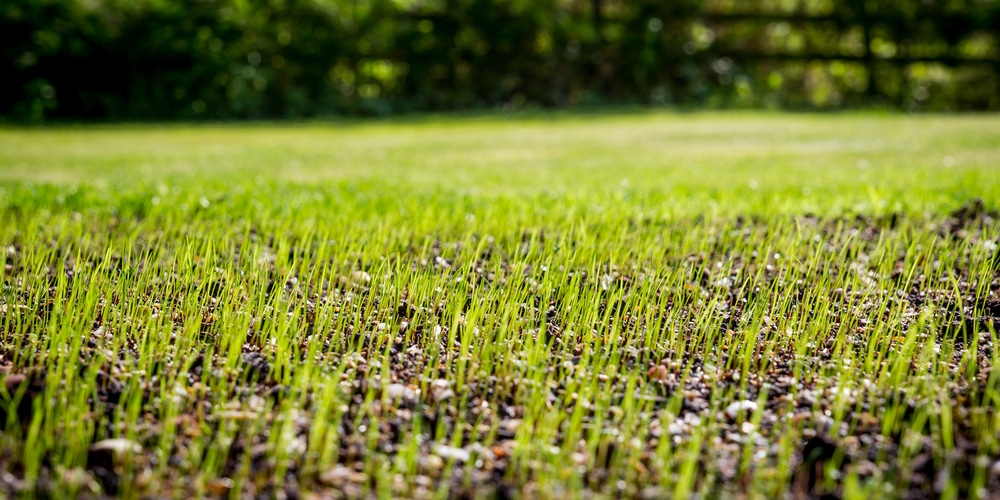To seed or not to seed? This is probably what’s running through your mind at this very moment. If you plan on creating a new lawn or revamping your existing one and have decided to plant tall fescue, then you must make a thorough analysis of your situation to help you make the best decision.
Quick Answer
…plant your seeds when the atmospheric temperature is between 68 and 75 ˚F, while the soil temperature is 60˚F
Luckily, tall fescue can adapt to varying climates because of its excellent tolerance to cold, shade, heat, and drought. Tall fescue allows owners to improve their lawn’s resilience and durability. Planting this type of grass (depending on your geographical location) could be the best choice you ever made.
However, one question remains. When should you plant tall fescue? This article is meant to delve a little deeper into when (in the spring) you should plant tall fescue and how to do it. Read on and find out more.
When to plant tall fescue in the spring

Spring is the second-best time to plant fescue seeds as the post-winter air temperatures and soil begin to warm. Planting fescue seeds in the spring should coincide with air temperatures that are between 68˚F to 77˚F while the soil should be above 60˚F.
However, you should note that optical times to plant fescue seeds in the spring vary depending on your geographical location. Individuals with lawns, which are located in transition zones, may experience ideal planting conditions in March, while those that are further North could experience the best times in April or early May.
However, if you are careful and live within fescue growing range, the landscape will provide you with cues on the best time to plant the grass. For instance, early-flowering Forsythia bushes (yellow) often bloom when the soil’s temperature is 55˚F. You should confirm the soil’s temperature with a soil thermometer before planting the seeds.
Challenges
While spring provides the right conditions for planting tall fescue, it does come with its challenges. For instance, it’s often characterized by heavy rains, ice, or melting snow. These conditions are bad because they can strip the ground of seeds or make it too cold to support germination. The conditions also make it easy for weeds to get a head start or the seeds to develop fungal infections.
Planting fescue in the spring allows the seeds to develop before they are affected by summer drought. However, they are more likely to struggle than grass planted in the fall. When planting grass in the spring, you should choose varieties that are more resistant to drought.
How to plant fescue grass in the spring
There are several steps that you’ll need to follow to ensure that your turf grows healthy when planting it in the spring. They include:
Choose the right period
You should plant your fescue seeds after assessing and determining the best period to do so. For instance, you should follow the instructions written above and plant your seeds when the atmospheric temperature is between 68 and 75 ˚F, while the soil temperature is 60˚F.
Select high-quality seeds
You should choose high-quality seeds that will produce a luscious lawn. You should select the seeds depending on your location. For instance, you should choose drought-resistant seeds if you live in locations that don’t receive a lot of rain and shade-resistant seeds if you live in locations with limited sunlight.
Test the soil
You should test the soil and assess its viability. The grass can tolerate a pH range between 5.5 to 7.5; however, you should make correct adjustments to ensure that the grass will have enough nutrients.
Prepare the site
You should prepare the site early enough by eliminating any weeds and unwanted grass. This eliminates any competition making it easier for the grass to grow. You should ensure that the potion is flat but slanted towards the direction where you want the water to flow.
Planting the seeds
Ensure that you follow the instructions on the packaging on how to plant your tall fescue seeds. Ensure that you use the correct amount of seeds after calculating your lawn’s size and removing any area that you don’t plan on seeding.
When to Plant Tall Fescue in the Spring: Conclusion
You can call a specialist to help you post-seed the lawn after doing the initial seeding. Ensure that you select the best time, have optimum soil compositions, and the correct environmental temperatures before seeding your lawn with tall fescue.
Related:
